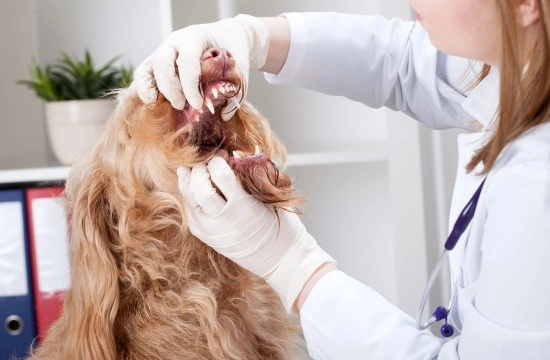
What are Anaerobic Bacterial Infections in Dogs?
An anaerobic infection involves bacteria which is able to grow in areas where no free oxygen is present. An example would be in a dog's mouth more especially around the gums or very deep in wounds which are typically punctures in a dog's skin. This type of infection can also occur in wounds where there's a bone fracture and where the bone has penetrated surface skin. If an injury seems to be taking far too long to heal, then it could due to the fact an anaerobic bacteria infection has taken hold.
Anaerobes are in fact, naturally present in the dog's body and live insymbiosis in their abdomens, vaginal canals, mouths and intestines. However, when something occurs to alter the balance of naturally occurring bacteria things change. This could be due to some sort of injury or even surgery, then the bacteria concerned invades a dog's tissue and which if left untreated, will lead to tissue death which in turn can turn extremely nasty and may even lead to a dog going into shock and subsequently them dying.
Symptoms & Types to Watch Out For
There are a various symptoms which may manifest themselves but these do depend on the cause of the anaerobic infection. The infection may be brought on through a wound where pus is oozing out but can also be present where the injury involves an open fracture. If you notice even a smallish wound or bite mark that is taking a lot longer to heal than normal, the chances are there is anaerobic bacteria present. Other symptoms to watch out for include the following:
- Fever
- Lameness
- Difficulty in eating
- Loss of appetite which is typically related to an infection of the gums
The types of bacteria that could be the cause and lead to anaerobic infections include the following:
- Bacteroides
- Fusobacterium
- Actinomyces
- Clostridium
- Peptostreptococcus
What Are the Causes?
When it comes to the cause of an anaerobic bacterial infection taking hold, it is typically when the normal balance of bacteria is disrupted in a dog's body. This may be caused by trauma, an injury of some kind or even after a surgical intervention has taken place where metal implants have been inserted where a bone has been broken.
What is the Diagnosis?
Vets would need to have a clear picture of a dog's history and health, they would need to know when any symptoms started to show and if anything happened to trigger the condition which could include the following:
- Injuries – even very slight ones
- Problems eating – due to a mouth infection
- Recent surgery of any kind
A vet would need to rule out all other causes so they can make a correct diagnosis and confirm that indeed an anaerobic bacterial infection is present and has taken hold. They would then carry out the necessary tests which would include doing a complete chemical blood profile, blood count and urine test. All of these would confirm if there is a higher white blood cell count and if there is a systemic infection present. The vet would also take samples of any pus should there be any so it can be analysed in a laboratory to see if it grows without any oxygen present – if it does grow this confirms that anaerobic bacteria are present.
What is the Treatment?
Dogs are normally put on long-term antibiotics and this is an essential part of the treatment which has to be completed even if all symptoms have disappeared and a dog appears to have recovered before the end of the course. If the tiniest of bacteria is still present, it will take hold again very quickly. Should you find it hard to give your pet all the antibiotics they need to take, a good trick is to conceal the pills in a bit of their favourite food, but you have to make sure they ingest the medication and that they don't spit them out when you are not looking.
If the infection has attacked a dog's muscles which would typically be along their legs, rump, neck and back, vets will normally cut into the wound in order to clean out any dead tissue and to let oxygen get into the wound. Should the infection be in the body, vets would need to anaesthetise your dog in order to surgically clean and drain the infection.
Managing an Anaerobic Bacterial Infection
Because it takes a long time for this type of infection to clear up, managing an infection carefully is crucial to ensure a dog makes a full recovery. The use of long-term antibiotics can be hard especially if your pet doesn't like taking the medication which means you have to get a little inventive"" as to how you get the pills down them. The course of antibiotics has to be completed to ensure that no bacteria remains otherwise it will take hold again.
If a wound has to be bandaged, then keeping it clean and redressing it regularly is crucial and your dog may have to wear an Elizabethan bandage or cone for a while until the wound has healed. Your vet would want to see your dog on a regular basis to make sure the infection is under control and that wounds are kept clean. They would also want to carry out follow up tests to make sure the bacteria has been eliminated.
Should you notice any change in your pet's behaviour, it's really important to take them back to the vet as soon as you can because something serious could be going on which needs immediate veterinary treatment. Part of the after-care would involve not doing certain activities which includes not letting your pet swim and you may even have to limit the amount of exercise you give your dog to prevent dirt and debris entering the wound.
""



